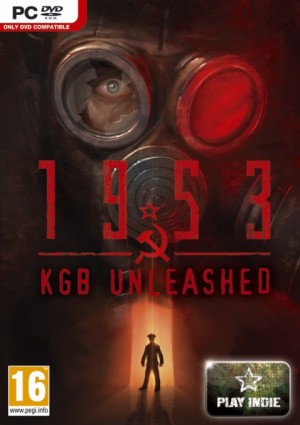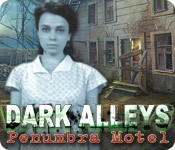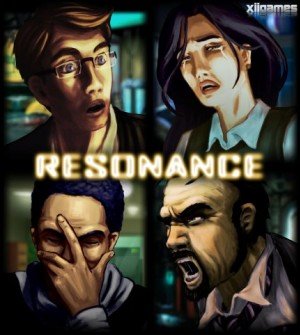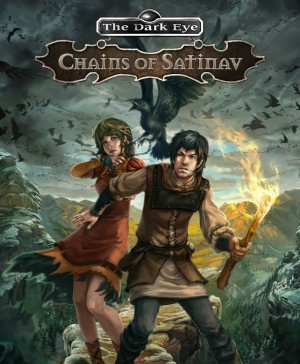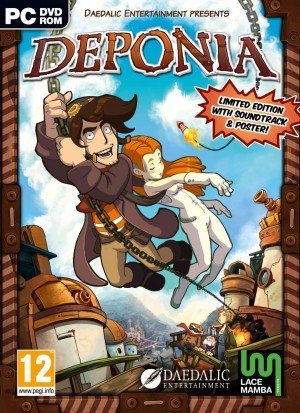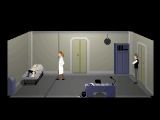Review for 1953: KGB Unleashed

As much as I love Myst, I'm a bit leery when it comes to its so-called “clones” – many of which reproduce the formula without nearly the same quality – so I went into 1953: KGB Unleashed with some trepidation. Fortunately, despite some minor flaws, the intriguing backstory of Russian mind experiments and engaging gameplay in this solitary first-person adventure won me over. Fans of mechanical puzzles, mysterious subterranean installations, and intriguing sci-fi plots should lap this up, and while it might not convert the Myst-haters, it's nevertheless a challenging but enjoyable journey.
The game begins with some old black and white stock footage of Moscow to help establish the era, but it isn't long before it transitions to a digitally rendered cutscene underneath the city, where our hero, Gleb Ivanovich Nikolayev, wakes up in a low-lit bunker. It's a clichéd premise: the protagonist finds himself in a strange place, can't remember how he got there, and must now overcome a variety of obstacles to get out. However, thanks to some compelling puzzles and interesting plot twists, the familiar amnesiac setup works quite well. You'll soon discover that escaping is not such an easy task, and as you gradually recover your memory and investigate your surroundings, you'll uncover a dark history of strange and disturbing events.
The plot is not quite as simple or clear as the premise. As you explore the bunker, Gleb begins to flashback to fragmented memories of strange experiments involving telepathic abilities, attempts to communicate with the dead, and paranormal activity that wouldn't feel out of place in an episode of The X-Files. Much of the background is revealed through books, reports and other texts found along the way, and a lot of time will be spent reading if you want to understand what's going on. It's worth taking the time to read everything that's lying around, as everything is well written, gradually revealing what's happened and hinting at what's to come. The details become more complex as you progress, but the game makes it easy to re-read any of the material your find, storing them in Gleb's “passport”.
The deserted underground surroundings create an eerie atmosphere, as you slowly uncover the mystery of what the fledgling KGB were working on and what might have been unleashed in that bunker. As you descend further into the facility, the surroundings become stranger and darker, hinting at the unusual nature of the experiments which occurred there. There's an empty bed where someone was clearly being studied, various medical reports that have been carelessly discarded and evidence of paranormal activity, all suggesting that something odd has taken place. The surroundings and technology on display all add to the feel that you're poking around places the KGB would prefer remained secret.
There are several cinematics with additional voiceovers, but there are only two main characters throughout the game: Gleb and a mysterious man helping him to escape, whose presence is only conveyed as a voice heard through the facility's speakers. It turns out Gleb is an electrician working for the Ministry of State Security, but it doesn't become apparent until the end who his unseen informant is. The protagonist offers some commentary when a new puzzle is discovered, often hinting at part of the solution but never giving anything major away. For the most part, however, this is a solitary game in a lonely, abandoned facility.
Almost everything is observed through Gleb's eyes, and controlling the game couldn't be simpler. Sliding the cursor to the edge of the screen rotates the camera 360 degrees, and navigation occurs by clicking exit indicators to other explorable areas. Hotspots are highlighted by a change in the mouse cursor, and while key objects can be challenging to find at times, there is never a need for pixel hunting. Right-clicking brings up the inventory and Gleb's passport. Inventory items appear at the bottom left of the screen, and you can still rotate the camera when they are visible. This is a great way of displaying the items clearly while minimising the impact on the player's view. The passport allows access to any books, reports or other texts you've discovered without having to return to their original location. This is another nice feature, as there are many clues hidden in the various documents and it saves a lot of note taking, though some notes are still required.
While the screen resolution is fixed and the setting intentionally dreary, the graphics work really well. Gleb starts in a simple bunker with a corridor leading to a meeting room, but eventually discovers hidden rooms, a laboratory and eventually a highly secure area where the story reaches its climax. The ominous, clandestine feel pervades most of the game, creating a claustrophobic atmosphere which suits the story. The setting feels true to the burgeoning Cold War-era, and the more you explore, the more there's an increasing sense of danger, though rarely is there any actual tangible threat. Lighting is used nicely, from the rooms illuminated by red warning lights to other scarier, dimly lit areas explored only by torchlight. Gleb's flashbacks consist of black and white cutscenes that help to flesh out the story, but they mainly just feature static images of other characters inserted into the same locations. Although this presentation is pretty basic, it works well enough in giving the mystery some momentum.
The puzzles are 1953's greatest strength and make it hard to put down. They range from simple inventory application to piecing together various clues hidden in the environment to solve more complex conundrums. They can definitely be challenging at times, but in a fun way. All solutions follow a solid chain of logic, and as long as you pay plenty of attention to your surroundings, there is usually a clue or a piece of information that seems relevant to ponder. The inventory puzzles are among the easiest. There are plenty of items to collect, but there are no combinations and it's often clear when objects need to be used, never reaching for bizarre solutions.
The puzzles become more difficult and interesting as the game progresses, though there are some instances where the solution can be achieved by guesswork or chance. Starting with a mathematics-based puzzle to restore power, working out the right fuses to activate in order to achieve the correct voltage, the challenges evolve to more taxing problems such as decoding an electrical diagram in order to control the ventilation system. In the case of one puzzle, I noticed what appeared to be an inconsistency between the clue and the solution it related to, but the error was quite obvious and wasn't major enough to hinder progress.
One puzzle requires entering an area filled with poisonous gas, meaning that you can only spend so long in there at one time before refilling your lungs with clean air. Increased exposure negatively affects you, as the colours fade, the screen starts turning red, and Gleb indicates that you can't go any further until the air is cleared. I never waited around long enough to see if staying would prove fatal, as the effects don't last once the danger zone is exited, and you can immediately return to investigate further.
Accompanying the action is a soundtrack that's successful in maintaining the creepy atmosphere. Music is not present all the way through the game, but key moments are scored. The arrangements do not sound typical of the period, but rather more like modern ambient music with an industrial feel, which works with the setting. Unfortunately, one of the more obvious flaws in this game is the voicework. The game was made in Russia, but the generic voiceovers break the illusion of events being set in (or underneath) Moscow. That's not to say the acting itself is bad: Gleb's gravelly-voiced helper adds a certain air of mystery, but it would have felt like a more authentic experience had the hero and other characters had local accents. Aside from some telltale signs scattered throughout, the game feels like it could have been set in an American bunker instead of a Russian one.
Overall, 1953: KGB Unleashed is an enjoyable experience for puzzle lovers, with some interesting plotting tying everything together, although largely after the most significant events have occurred. The ending is brief and disappointing, but the story is brought to a reasonable conclusion and feels neither too long nor too short. It took me about six hours to play right through, but even with a few potential stumbling blocks it shouldn't take more than eight to complete. For fans of Myst-like games, it's definitely worth checking out, and though it won't win over those who dislike the solitary, first-person experience, it should appeal to other adventurers looking for an interesting story and an abstract brain workout.


